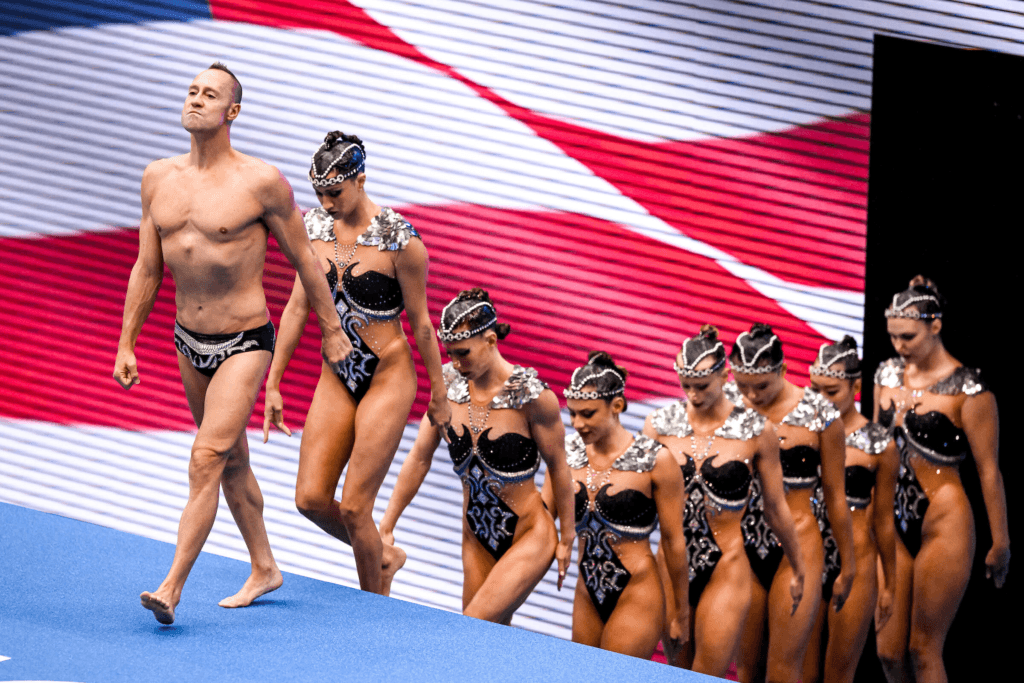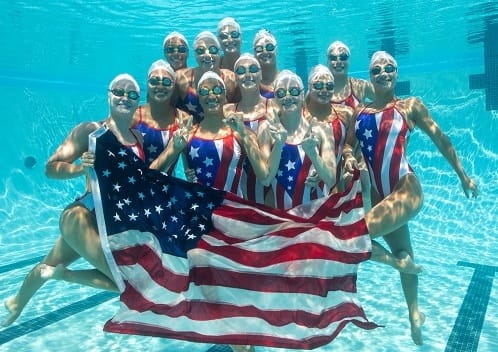Artistic Swimming Olympics 2024 : The Rigorous Journey to Becoming a U.S. Olympic Artistic Swimmer
Endurance, Power, and Grace: The Demands of Artistic Swimming
To become a U.S. Olympic artistic swimmer, athletes must demonstrate exceptional endurance, power, and grace. The sport requires mastery of various techniques, including the eggbeater, flamingo, scull, and rocket split. Daily seven-hour practices, dance lessons, and the physicality of the routines ensure that these athletes are in peak condition.
The Inclusion of Men in Artistic Swimming Olympics 2024
This year, under new regulations, men were to be allowed to compete in artistic swimming at the Olympic level for the first time. Despite this, the world’s best male artistic swimmer, 45-year-old William May from Santa Clara, California, did not make the final cut for the U.S. team. According to Adam Andrasko, CEO of USA Artistic Swimming, there aren’t any men ready to compete at the Olympic level in this sport yet.
The Evolution and Increased Rigor of Artistic Swimming

Artistic swimming, previously known as synchronized swimming, has evolved significantly in recent years. The sport has become more intricate and demanding, with tricks becoming more complex and physically taxing. The addition of acrobatics in the Paris Olympics, which involves lifting and flinging teammates, has further increased the sport’s difficulty.
The Impact of Coach Andrea Fuentes
The U.S. artistic swimming team has seen a resurgence under the guidance of Andrea Fuentes, a former Olympic synchronized swimmer and the most decorated swimmer in Spanish national team history. Fuentes has introduced rigorous CrossFit training to the team, enhancing their strength and endurance, and revamped their routines to include more challenging elements.
The Dangers of High-Difficulty Routines
The increased difficulty in artistic swimming routines has brought higher risks. Anita Alvarez, a member of the U.S. team, has experienced blackouts during competitions, which may be linked to shallow-water blackout a condition resulting from extended breath-holding underwater. Despite these risks, the team continues to push the boundaries to achieve a higher degree of difficulty in their routines.
Grueling Training Schedules and Sacrifices
Training to be a U.S. Olympic artistic swimmer involves intense schedules, with athletes spending up to seven hours in the pool daily, followed by 90 minutes of strength training. This demanding regimen leads to frequent injuries, such as sprains, cracked ribs, and concussions. The team’s dedication and commitment, despite limited financial support, showcase their passion and determination to excel in the sport.
Looking Ahead to the Paris Olympics
The U.S. artistic swimming team is set to compete in the 2024 Paris Olympics, marking their first Olympic appearance since 2008. The team will participate in three events: the technical routine, the free routine, and the new acrobatic routine. With a renewed focus and determination, the team aims to deliver captivating performances that highlight the beauty and athleticism of artistic swimming.
Summary
Becoming a U.S. Olympic artistic swimmer involves rigorous training, immense dedication, and overcoming significant physical challenges. The sport has evolved to become more demanding, with increased risks and higher difficulty levels. Under the leadership of Andrea Fuentes, the U.S. team is poised to showcase their talent and hard work at the Paris Olympics, aiming to reclaim their status as leaders in the sport.
Trending : Gymnastics Rings Olympics Highlights 2024: Uneven Bars Final and Medal Winners

[…] Explore More : Artistic Swimming Olympics 2024:The Risks and Rewards of High-Difficulty Artistic Swimming Routine […]